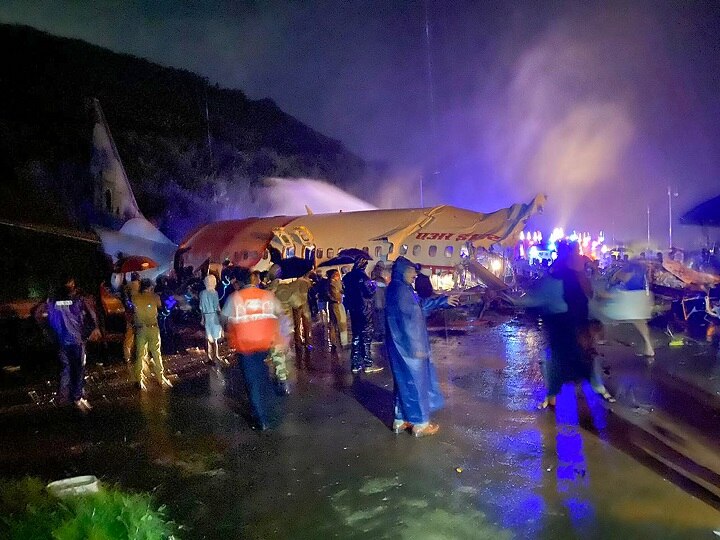Explorer
Explained: How Kozhikode Airport's Tabletop Runway Poses A Stiff Challenge For Pilots To Take-Off And Land
On Friday Air India Express crashed and broke into two at Karipur Airport, Kozhikode after it overshot the runaway. Here is why tabletop runways are challenging.

Air India Express flight with passengers on board en route from Dubai skidded off the runway while landing, in Kozhikode. (Image: PTI)
New Delhi: The death toll in the fatal Air India Express crash on Friday at Karipur Airport, Kozhikode has risen to 19. According to reports, the Boeing 737 NG or Next Generation overshot the runway while attempting to land at Kerala's 'tabletop' Kozhikode airport, breaking in two after nose diving into a 30-feet gorge in a nearby valley. The flight which flew in from Dubai to Kozhikode, with a total of 190 people on board--184 passengers, including ten infants, two pilots, and four cabin crew, skidded during landing at the Karipur Airport at around 7.45 pm. The Centre has ordered a probe into what could have been the cause behind this unfortunate incident which led to substantial casualties. One of the major reasons cited by aviation experts around the world has been the heavy rainfall over Kozhikode which could have made the landing of the flight very difficult at the airport which has as a tabletop runway. So is the airport's topography the major reason for the mishap? ALSO READ| Air India Plane Crash: Death Toll Rises To 19, Union Minister V Murleedharan Reaches Kerala's Kozhikode Airport What makes a tabletop runaway risky? Kozhikode airport has what is known in the aviation sector as a ‘Tabletop runway’ which is a runway located on top of a plateau or hill and either one or both ends drops into a deep gorge. These runaways are a challenge for the pilot as it requires a very ‘precise approach’ for landing and take-off to avoid issues such as overshooting the runway. The Kozhikode airport is also located on a hill, and bigger aircrafts such as Boeing 777 and Airbus A330 had stopped using the airport as it was too short. Other examples of tabletop airports include Lengpui airport in Mizoram, Mangalore Airport in Karnataka. Pakyong airport in Sikkim, and Simla and Kullu in Himachal Pradesh. Mangalore incident Comparisons are being made between Friday’s incident and the 2010 Boeing 737 Air India Express crash in Mangalore. The incoming flight to Mangalore had overshot the runway while landing and the pilots tried to save the aircraft by attempting to take-off again before running out of tarmac. Unfortunately, the aircraft plunged into a valley below and exploded after the fuel caught fire. Fortunately, unlike in the case of the Mangalore, the turbine fuel did not catch fire in Friday’s tragic incident. "In Mangalore, pilots had landed the aircraft in the middle of the runway. Then they quickly tried to take-off again, thereby using thrust and power. However, their attempt failed and at the peak power, the aircraft hit antennas at the end of the runway and dived into the valley," said a senior commander in an IANS report. He also pointed out that the Mangalore incident was a 'high intensity' one which ignited the on-board fuel, thereby, causing a heavy toll on life. The Air India Express flight that crashed on Friday was flying from Dubai as part of the Centre’s repatriation flights under the Vande Bharat Mission. Minister of State for External Affairs V Muraleedharan has reached Kozhikode to take stock of the situation where Air India flight (IX-1344) crash-landed yesterday. Civil Aviation Minister Hardeep Puri said, "Two investigation teams of professionals from Air India, AAI and AAIB will leave for Kozhikode at 02.00 hrs & 05.00 hrs. Everyone has now been rescued from the aircraft. Rescue operations are now complete. Injured being treated at various city hospitals."
Related Video
Breaking News: Delivery Crisis Today, Zomato, Swiggy, and Other Platforms Face Worker Strike
Follow Breaking News on ABP Live for more latest stories and trending topics. Watch breaking news and top headlines online on ABP News LIVE TV

Dr Prosenjit NathThe writer is a technocrat, political analyst, and author.
Opinion




































